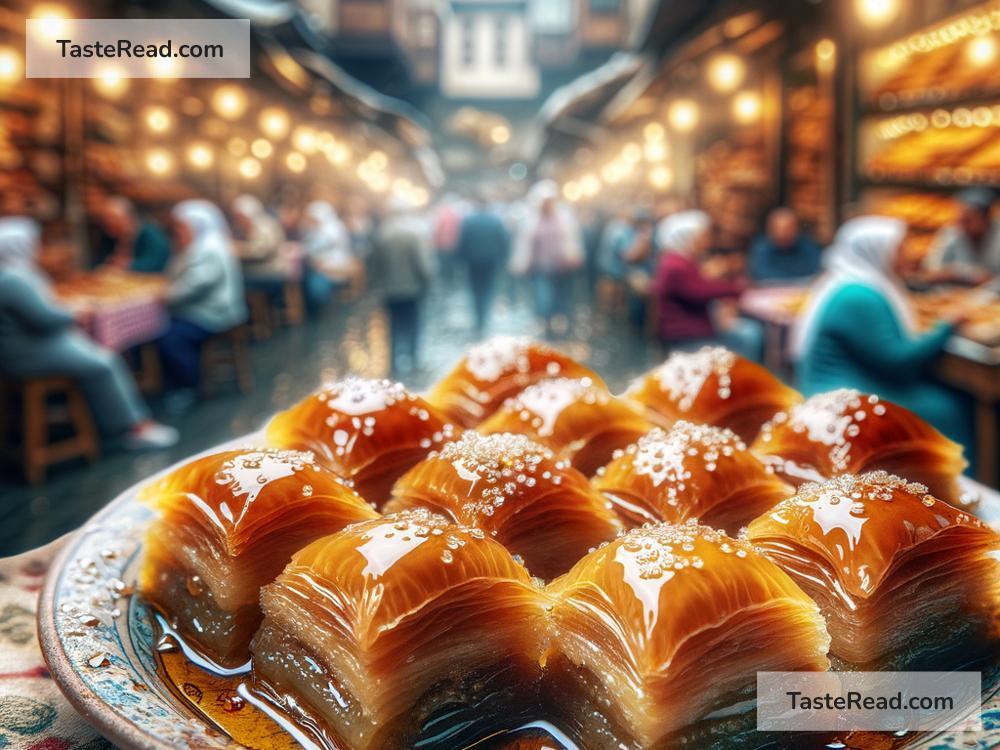Title: The Sweet Saga: How Turkish Baklava Became a Delicious Emblem of the Ottoman Empire
In the grand tapestry of world cuisines, each dish tells a story. Some speak of humble beginnings, while others recount tales of royal indulgence. Among these, the story of Turkish baklava stands out, a confection that transcends mere dessert status to become a sweet symbol of the Ottoman Empire’s richness and complexity. This delectable dessert, with its layers of flaky pastry, sweet syrup, and crunchy nuts, is more than just a treat; it’s a slice of history, emblematic of the cultural and culinary wealth of an empire that once spanned three continents.
The origins of baklava are as layered as the pastry itself, with various cultures claiming its invention. Yet, it’s the version perfected in the kitchens of the Ottoman Empire that has left an indelible mark on the culinary world. This evolution of baklava into a quintessential Turkish delight is a testament to the empire’s love for refinement and its prowess in melding different cultures.
The journey of baklava from a simple sweet to an emblem of empire is a testament to the culinary craftsmanship honed in the palaces of Istanbul. During the Ottoman era, the imperial kitchens were more than just places to prepare meals; they were centers of culinary innovation, where the finest cooks experimented with ingredients brought from across the empire. It was here that the modern version of baklava was born, featuring paper-thin phyllo dough, a technique that demanded the highest skill and patience.
What makes baklava so unique, and how did it capture the essence of an empire? At its core, baklava is a study in contrasts and harmony. The flaky, butter-laden layers of dough encase a heart of finely chopped nuts, often pistachios or walnuts, sweetened with honey or syrup. Baked to golden perfection, each bite offers a symphony of textures and flavors—crisp yet tender, sweet but not cloying, rich yet remarkably light. This balance is a hallmark of Ottoman cuisine, reflecting an empire at the crossroads of the world, where East meets West, and tradition blends with innovation.
The cultural significance of baklava in the Ottoman Empire cannot be overstated. It was a sweet that transcended the ordinary, becoming a staple of royal celebrations and religious festivities. The making of baklava was an event in itself, particularly during the Ramadan festival of Baklava Alayı, when trays of baklava were ceremoniously presented to the Janissary soldiers in a grand parade. This tradition underlines baklava’s role not only as a culinary masterpiece but also as a symbol of the empire’s might and the sultan’s generosity.
Beyond the palaces and military barracks, baklava became deeply woven into the social fabric of Ottoman society. It was, and remains, a gesture of hospitality and a celebratory offering among people of all classes. This widespread appreciation of baklava helped solidify its status as a national treasure, a sweet emblem of Turkish identity and craftsmanship.
Today, the legacy of Ottoman baklava lives on, both in Turkey and in countries that were once part of the empire. Walking through the bustling markets of Istanbul or Damascus, one is enveloped by the enticing aroma of fresh baklava, a reminder of the enduring appeal of this ancient sweet. Each region now boasts its own variation, from the pistachio-laden delights of Gaziantep to the richer, buttery versions found elsewhere, yet all share a common lineage that traces back to the Ottoman kitchens.
The story of Turkish baklava is a microcosm of the Ottoman Empire itself—rich, layered, and diverse. It reminds us that food is more than sustenance; it is a language that communicates culture, history, and tradition. As we savor each bite of this exquisite pastry, we partake in a centuries-old tradition that continues to bring people together, transcending time and borders. In this way, baklava is not just a symbol of the Ottoman Empire’s bygone glory; it is a living testament to the empire’s lasting influence on the world’s culinary stage.


